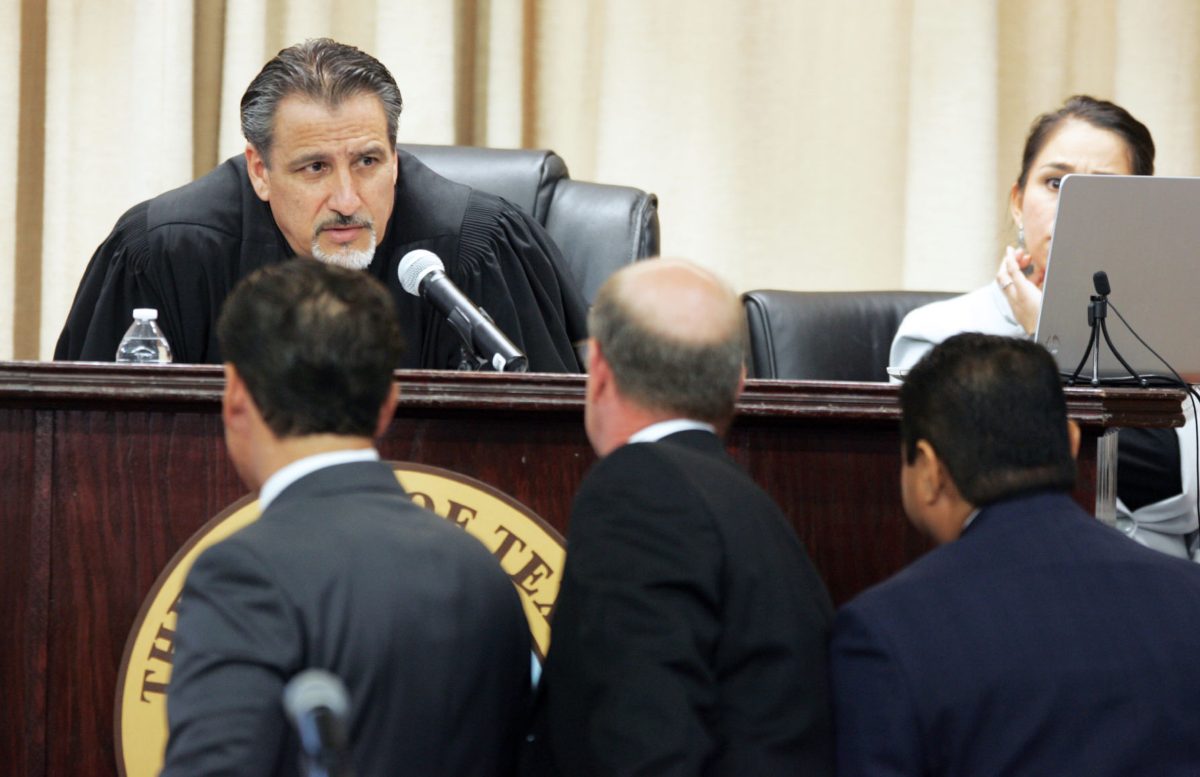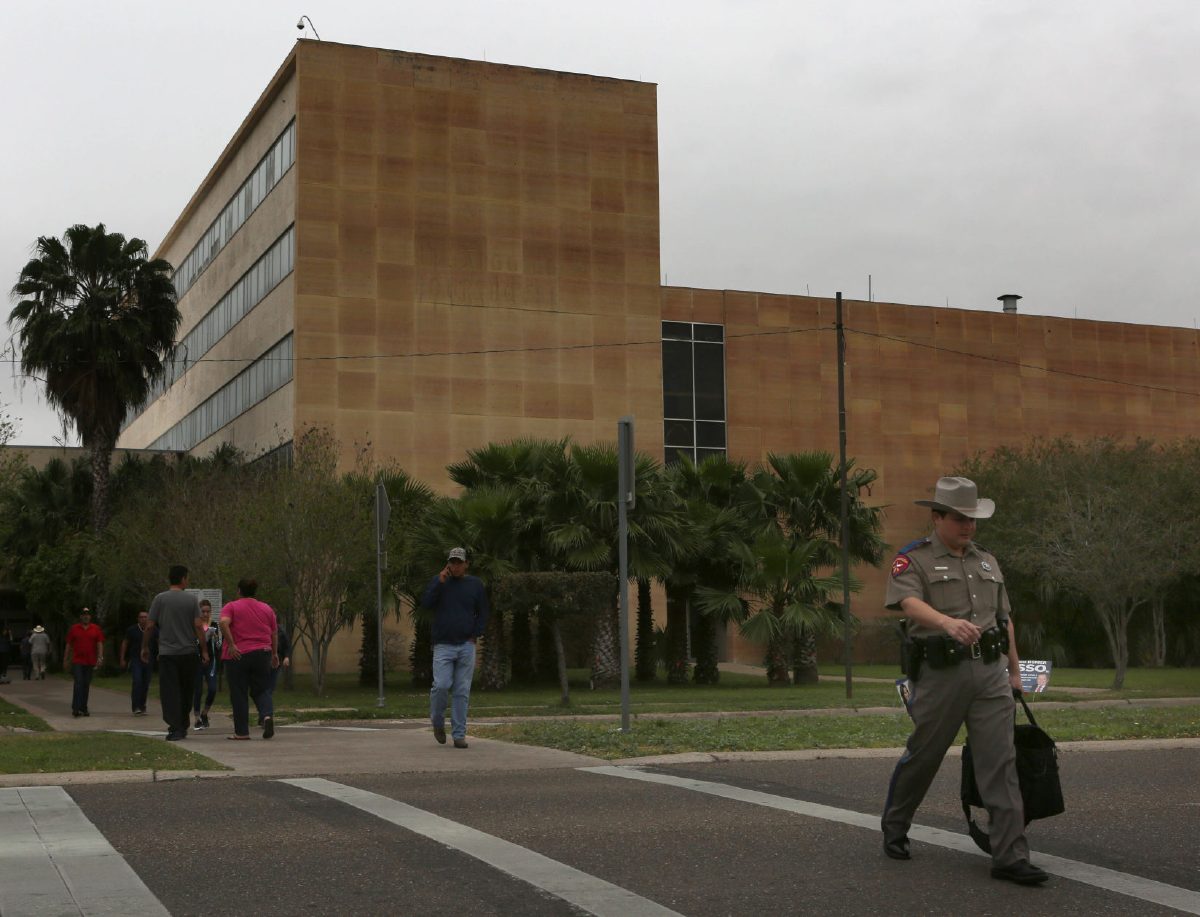Do you remember what you were doing on March 12, 2020?
You might not and that’s understandable.
The world is different now. On March 12, 2020, a person wearing a mask would be a strange sight and police would probably be called if they walked into a bank.
But on that day, then-President Donald Trump announced the United States would implement travel restrictions over fears that a virus that originated in China may be a threat.
The next day, March 13, 2020, the University of Texas-Rio Grande Valley announced that it was extending its Spring Break until March 20, 2020, with students returning on March 23, 2020, in a strictly online capacity.
Then, on March 14, 2020, a slew of events in Hidalgo County were canceled.
Three days later, on March 17, 2020, the Hidalgo County Board of Judges suspended jury panels in the wake of the initial seven-day disaster declaration from Hidalgo County Judge Richard F. Cortez.
In addition to the suspension of jury panels, the Board of Judges put in place many other conditions, which the Texas Supreme Court allowed the judicial officers to do, including holding “nonessential” hearings via video, discussions about temperature screenings to enter the courthouse, social distancing protocols and eventually, a mask mandate.

During the uncertain meeting that put those initial precautions in place, judges, court staff, attorneys and media packed state District Judge Noe Gonzalez’s courtroom — a sight that hasn’t been seen again since that day.
Even through that uncertainty, Gonzalez and his colleagues put those precautions in place because the Hidalgo County Courthouse — on a daily basis — was one of the largest gathering places here with thousands of people filtering through the building every week from every corner of the county, including the at-near capacity jail.
If the virus would rapidly spread from one single point, the courthouse was a likely suspect.
But on that day, there was not yet a single confirmed case of COVID-19 in Hidalgo County though Tamaulipas health officials announced its first confirmed case.
A little more than a month later, on April 24, 2020, two years ago today, just four people in Hidalgo County, 14 in Cameron County and one in Willacy County had died from the virus.
A Willacy County death, a man in his 60s who died on April 4, 2020, was the first on record.
And two years ago today, there were just 290 positive cases.
As of Friday, 3,898 people have lost their lives to the virus and there are 128,001 confirmed cases, according to a Hidalgo County news release.
But there’s good news: the county reported no deaths on Friday and just 42 new confirmed cases — a consistent trend over the last several weeks.
However, statistics are not the only way to measure where the community is at with the pandemic.
There’s the courthouse, the first major institution in Hidalgo County to swiftly put in place numerous pandemic protocols making it a strong anecdotal barometer for where we are at in the “new normal.”
Starting Monday, it’s back to business as usual, mostly.
Gonzalez, the state district judge who heads the Board of Judges as the administrative judge, noted during an interview that the relaxing of pandemic protocols is a barometer because pre-pandemic large groups gather in the courthouse on a daily basis.

A little more than two years ago, large lines of people would begin gathering outside the courthouse at 7:30 a.m. and when the building opened, hallways and courtrooms would be filled with members of the public while hundreds of people accused of crimes who could not make bail would be transported through hallways of the courthouse from the county jail for hearings that happened in packed courtrooms that sometimes reached fire code capacity.
It’s unclear whether that’s what Monday will bring, and while the general area will be mask-free, each judge still has discretion — for now — to continue holding proceedings via videoconferencing.
If they do go back to all in-person hearings, judges are also allowed to require masks within their courtrooms, Gonzalez said.
However, the Board of Judges is still recommending that people wear masks.
“Now, it’s not only commonplace, it’s respected and we are now used to it,” Gonzalez said, referring to the mask as not only a symbol of the pandemic, but also as the easiest way to guard against the virus.
He also said the Board of Judges feels confident with easing the restrictions at the courthouse that have been in place for more than two years.
“I share all the responsibility with my fellow judges, but ultimately the Texas Supreme Court has power vested in the local administrative judge. But I will tell you, I really do think if we do this properly we’re going to be safe,” Gonzalez said. “The community is actively moving forward. Grocery stores, department stores, restaurants, everybody’s moving toward some form of normalcy than where we were before.”
Members of the public who have business at the courthouse should be prepared to ask attorneys or to call individual courts to inquire what the rules are for where they have to go, and attorneys will inform clients of whether their hearings will be in-person or virtual.
People should also be prepared to be greeted by medical staff at the courthouse who will take temperatures.
Social distancing requirements are also relaxed as of Monday.
And while life appears to be getting closer to what it used to be, Gonzalez said the courts are in close communication with health officials and are prepared to re-implement pandemic protocols should there be a surge.
“Right now, we’re good,” Gonzalez said. “I think that moving forward we’re going to be fine.”




